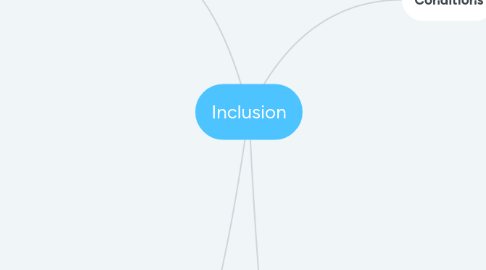
1. Diversity thinking
1.1. The child
1.1.1. Part of the class group
1.1.2. Adapting education to learning needs
1.1.3. Creation of an optimal learning environment
1.2. The parents
1.2.1. Education experts
1.2.2. Questions from parents as a starting point
1.2.3. Shared responsibility
1.3. Professionals
1.3.1. Support needs
1.3.2. Constructive cooperation with external stakeholders
1.3.3. Focus on the individual in context
2. CLASS PRACTICE
2.1. Collaborative teaching (flexible support by a group of colleagues)
2.1.1. Flexibility
2.1.2. Good planning
2.1.3. Collaboration between colleagues
2.2. Collaborative learning
2.2.1. Joint learning process
2.2.2. Flexible student groups
2.2.3. Students help eachother
2.2.4. Examples of educational techniques
2.2.4.1. Peer tutoring
2.2.4.2. Peer coaching
2.3. Collaboration in problem solving
2.3.1. Systematic approach to undesirable behavior
2.3.2. Clear rules for all students
2.3.3. Rewards and punishments
2.4. Heterogeneous grouping
2.4.1. Same age but different skill levels in same class
2.5. Effective teaching methods
2.5.1. Standard curriculum for all students
2.5.2. Pupils with specific educational needs receive an individual treatment plan
2.6. Home Group System
2.6.1. Some classrooms and a small group of teachers who teach about all subjects in the form of group work
2.7. Alternative learning strategies
2.7.1. Make pupils responsible for their learning process
3. Conditions
3.1. Teacher
3.1.1. Positive educational attitude
3.1.2. Giving students the feeling that they 'belong'
3.1.3. Use appropriate pedagogical skills and make time for reflection on their profession
3.2. School
3.2.1. Integral approach
3.2.2. Flexible guidance structure
3.2.3. Good administration
3.3. External conditions (government)
3.3.1. Clear national polic.
3.3.2. Flexible funding that promotes inclusion
3.3.3. Regional coordination

